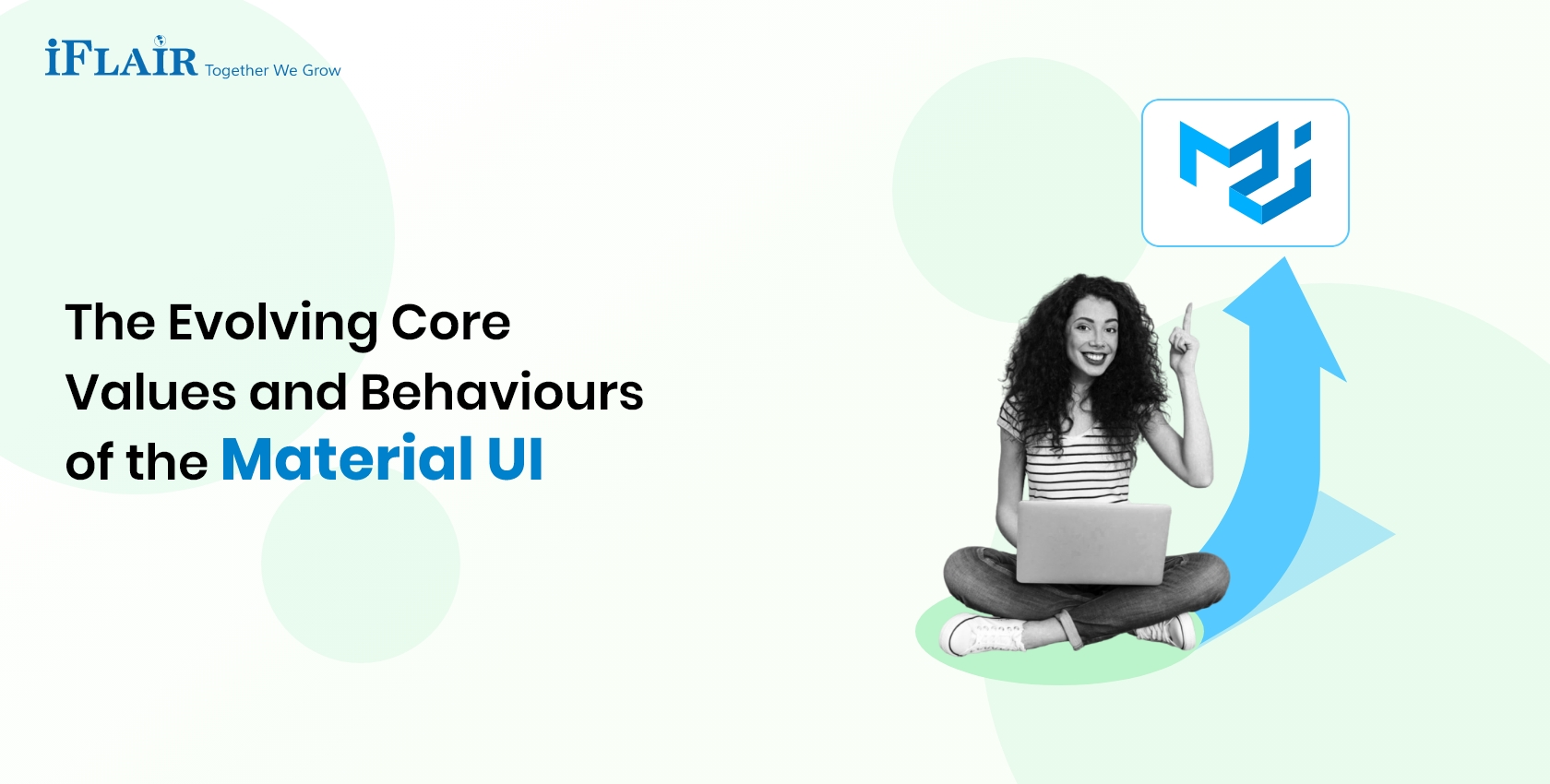
The Evolving Core Values and Behaviours of the Material UI
Feb 26, 2024 |
8 minutes read

The creation of appealing and user-friendly interfaces is the most important and Material UI helps designers to succeed in the task of designing. One of the most effective ways to achieve this is by utilizing component libraries of Material UI which is used by the Material UI designer, which provide pre-designed elements that can be easily integrated into projects. Among the number of options available, Material-UI stands out as a popular choice, enhanced its popularity by its robustness, flexibility, and adherence to Google’s Material Design principles.
In this detailed article, we will look into the intricacies of Material-UI, exploring its features, benefits, usage, and best practices.
Understanding Material-UI
Material-UI is a React component library that offers a vast collection of customizable UI components, following the principles of Google’s Material Design. Developed and maintained by an active community, Material-UI development empowers developers to build sleek, responsive, and intuitive user interfaces with ease. Whether you’re working on a small personal project or a large-scale enterprise application, Material-UI provides the tools necessary to streamline development and enhance the user experience.
Key Features of the Material UI
Rich Component Library
Material-UI boasts an extensive array of UI components, including buttons, icons, typography, navigation elements, form inputs, and more. Each component is meticulously crafted to adhere to Material Design guidelines, ensuring consistency and visual appeal across the application.
Customization Options
While Material-UI provides ready-to-use components out of the box, it also offers extensive customization capabilities. Developers can effortlessly adjust styles, colors, and themes to match the branding and design requirements of their projects. With support for CSS-in-JS solutions like Styled Components or JSS (CSS in JS), customization becomes seamless and maintainable.
Responsive Design
Building responsive web applications is simplified with Material-UI’s built-in support for responsive design principles. Components automatically adapt to different screen sizes and resolutions, ensuring a consistent experience across devices, whether desktop, tablet, or mobile.
Accessibility
Accessibility is a fundamental aspect of modern web development, and Material-UI places great emphasis on ensuring that applications are accessible to all users. The library incorporates accessibility features into its components, making it easier for developers to create inclusive experiences that comply with web accessibility standards such as WCAG (Web Content Accessibility Guidelines).
Theming Support
Material UI’s theming capabilities allow Material UI developers to define custom themes for their applications effortlessly. By leveraging the powerful theming API, developers can define variables such as colors, typography, and spacing, enabling consistent styling across the entire application.
Integration with React Ecosystem
CAs a React component library, Material-UI seamlessly integrates with the broader React ecosystem. Developers can leverage popular tools and libraries such as React Router, Redux, and React Context API alongside Material-UI to enhance functionality and streamline development workflows.
Usage and Implementation
Integrating Material-UI into a project is straightforward, thanks to its intuitive API and comprehensive documentation. Here’s a step-by-step guide to getting started:
Installation
Begin by installing Material-UI and its dependencies using a package manager such as npm or yarn.
npm install @mui/material @emotion/react @emotion/styled
Importing Components
Once installed, import the desired components from Material-UI into your React application.
import { Button, TextField, AppBar, Toolbar, Typography } from ‘@mui/material’;
Usage
Utilize the imported components within your React components as needed, passing props to customize their appearance and behavior.
function MyApp() {
return (
<div>
<AppBar position=”static”>
<Toolbar>
<Typography variant=”h6″>My App</Typography>
</Toolbar>
</AppBar>
<TextField label=”Username” />
<TextField label=”Password” type=”password” />
<Button variant=”contained” color=”primary”>Login</Button>
</div>
);
}
Customization
Customize the appearance of components by leveraging Material-UI designs’ theming capabilities or by applying custom styles using CSS-in-JS solutions like Styled Components.
import { createTheme, ThemeProvider } from ‘@mui/material/styles’;
const theme = createTheme({
palette: {
primary: {
main: ‘#1e88e5’,
},
secondary: {
main: ‘#f50057’,
},
},
});
function MyApp() {
return (
<ThemeProvider theme={theme}>
{/* Your app components */}
</ThemeProvider>
);
}
Are you a beginner in Material UI Development? Here is the guide for you – The Beginner’s Guide for Creating Eye-catching Interfaces with Material UI
Are you looking for the Material UI development? Contact us today!
The Way Forward
The future for Material-UI looks promising as it continues to evolve in tandem with advancements in web development, the React ecosystem, and Angular Material UI. Moving forward, we can expect Material-UI to further enhance its component library with additional features, optimizations, and improvements in accessibility and performance. With its solid foundation and commitment to excellence, Material-UI is poised to remain a cornerstone of web development for years to come. Hire Material UI developers from iFlair to successfully launch your Material UI projects.


